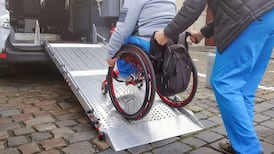Local authorities, not religious institutions owned the Mother and Baby Homes that had the worst conditions over decades, including the Tuam home which was run by the Bons Secours nuns, the Commission found.
The local authority-owned homes, including Tuam and Kilrush which was run by the Sisters of Mercy, had “appalling physical conditions”.
Conditions in the religious-owned mother and baby homes were “considerably better and improved over time.”
They were “greatly superior to the county homes where, until the 1960s, many unmarried mothers and their children were resident,” the Mother and Baby Homes Commission of Investigation report published on Tuesday notes.
Other residents in the county homes run by local authorities “were mainly older people and people with disabilities” as well as children who had special needs. “The accommodation and care given to these children in county homes was grossly inadequate,” it said.
The county homes, “successors to the pre-independence workhouses,” were owned and controlled by local authorities. “They were responsible for running costs, maintenance, and major improvements. Money came from local rates.”
Staff in the county homes were local authority employees, “though most of the domestic work was done by residents who were unpaid: the majority were unmarried mothers.” The homes were also subject to regular inspections by the Department of Local Government.
In general the report found that “while the department inspectors were thorough in carrying out inspections and were constantly seeking improvements, the responsibility to actually do anything rested mainly with the local authorities.”
Despite local authorities having powers to prosecute mother and baby homes for infringements of regulations “no mother and baby home was ever prosecuted.” Even in the 1940s when infant mortality at Bessborough which was run by the Sisters of the Sacred Hearts of Jesus and Mary was at its height there was no indication that health authorities in Cork considered closure despite it having that power. Even as numbers in the homes exceeded the maximum allowed a blind eye was turned. In a similar way while regular inspections of the homes “were often critical of conditions” the Department “preferred to use persuasion, not compulsion to implement improvements.”
The Commission found “the Department’s main interest appeared to have been the occupancy figures, and the rising cost of maintaining women and children in the homes.”
A sample of four county homes were investigated by the Commission. During the 1920s living conditions in the Cork County Home (1921 to1960) “and all county homes were appalling”, it said. In 1921 the women ate their meals squatting on the floor” with “most heating by open fire.” The food “was often adulterated or unfit for consumption. Milk was watered and meat was of poor quality. No major improvements were carried out until the 1950s.”
In that same county home “there were several reports of unmarried mothers being assaulted by ‘inmates’ who were drunk or suffering from mental illness.” One woman, already a mother of two, became pregnant “apparently by a male ‘inmate’” and was sent to a Magdalene laundry. Some “women ‘absconded’ leaving their baby behind.”
Conditions at the county home in Stranorlar (1922 to 1964), Co Donegal were so poor that in the 1920s removal of the unmarried mothers and their children to a disused workhouse in Ballyshannon was considered. There were “several outbreaks of typhoid.” The diet there was considered “too generous” by the then Minister for Local Government who informed authorities at the home “that residents should receive three meals a day not four.”
It was 1949 before there were any major improvements there. In 1954 the matron objected to plans to move the unmarried mothers and children out of the county home as “she would be unable to find replacement workers.”
At the Thomastown county home (1922 to 1960) in Kilkenny conditions were as poor with, in 1925, 58 infants sleeping in 32 cots. It was “several decades” before there were any improvements there.












